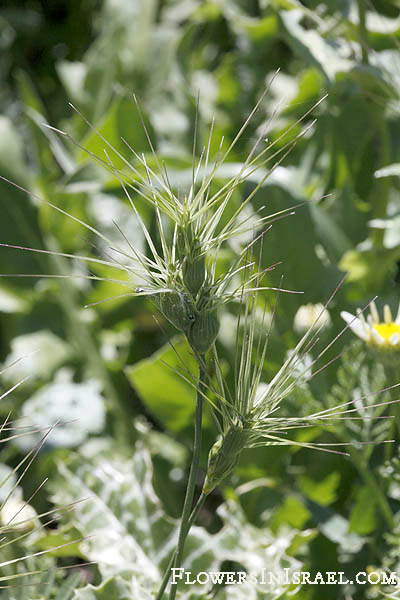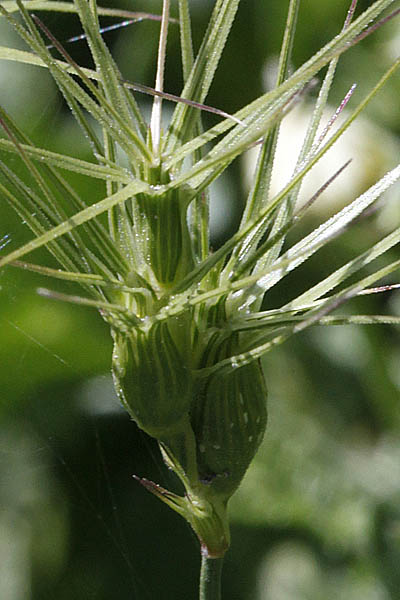Hebrew: בן-חיטה ביצני, Arabic: دوسر ركبي
| Scientific name: | Aegilops geniculata Roth | |
| Synonym name: | Aegilops ovata L. | |
| Common name: | Ovate goat-grass | |
| Hebrew name: | בן-חיטה ביצני | |
| Arabic name: | دوسر ركبي | |
| Family: | Graminea (Poaceae), Grass Family, משפחת הדגניים |

|
| Life form: | Annual | |
| Stems: | Numerous stems, up to 30 (-40)cm | |
| Leaves: | Alternate, entire, hairy or glabrous, sheats glabrous, margin smooth | |
| Inflorescence: | Spike 1-2cm (excluding awns) | |
| Flowers: | Polygamous, green | |
| Fruits / pods: | Caryopsis ellipsoid, longitudinally grooved, hilum long-linear, hairy at apex | |
| Flowering Period: | March, April, May | |
| Habitat: | Batha, Phrygana | |
| Distribution: | Mediterranean Woodlands and Shrublands, Semi-steppe shrublands, Montane vegetation of Mt. Hermon | |
| Chorotype: | Mediterranean | |
| Summer shedding: | Ephemeral |

Derivation of the botanical name: Aegilops, from the Greek aegilos (a herb liked by goats, or a goat), with ‘goatlike’ (referring to whiskery-awned spikelets), literally, "goat in the eye". geniculata, bent sharply like a knee. ovata, egg-shaped, with the broad end down. The Hebrew word:,בן-חיטה, ben-chita , close to wheat, chita.

|